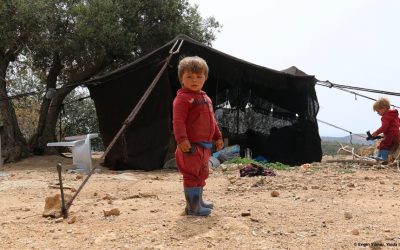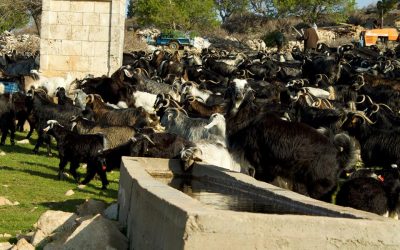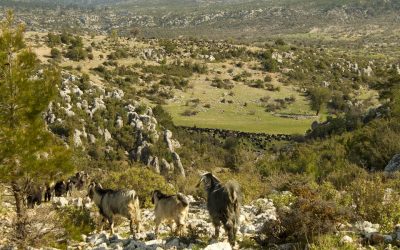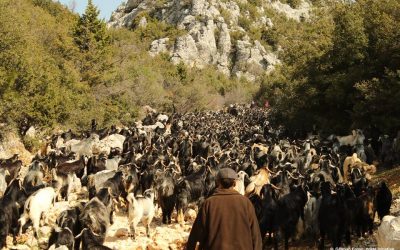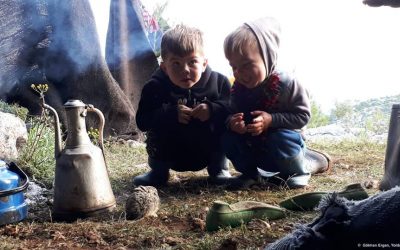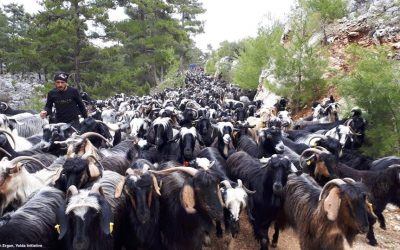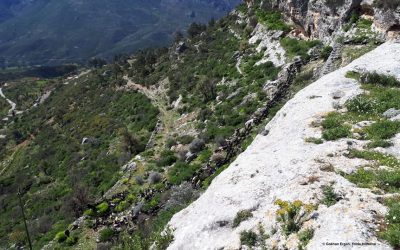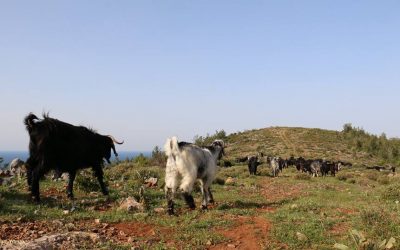Transhumance and Vultures
Mobile pastoralism is the most sustainable livestock management system for people and nature. For thousands of years, mobile pastoralists have been moving through the rangelands with their herds, acknowledging their constant interaction and symbiosis with nature. Interaction between transhumant shepherds in Spain and vultures is a good example of this mutualism which benefits both parties.
Spain is home to more than 90% of European Vultures. Among others, one reason for this high figure is the presence of extensive livestock management systems, including transhumance. Transhumance ensures vulture populations with an availability of safe food (safer than most vulture feeding sites) and although unpredictable regarding time and place, they also help maintain suitable habitats for vultures to scavenge wild prey. In return vultures clean up carcasses and other organic waste preventing the spread of diseases and helping curb greenhouse gas emissions generated by artificial carcass collection and transportation to processing plants. Vultures also help prevent the increase of predator populations (such as feral dogs) by reducing the amount of carrion available in the field.
Adverse policies affect both transhumance and vultures in Spain, as the latter are endangered by certain veterinary drugs such as Veterinary Diclofenac.
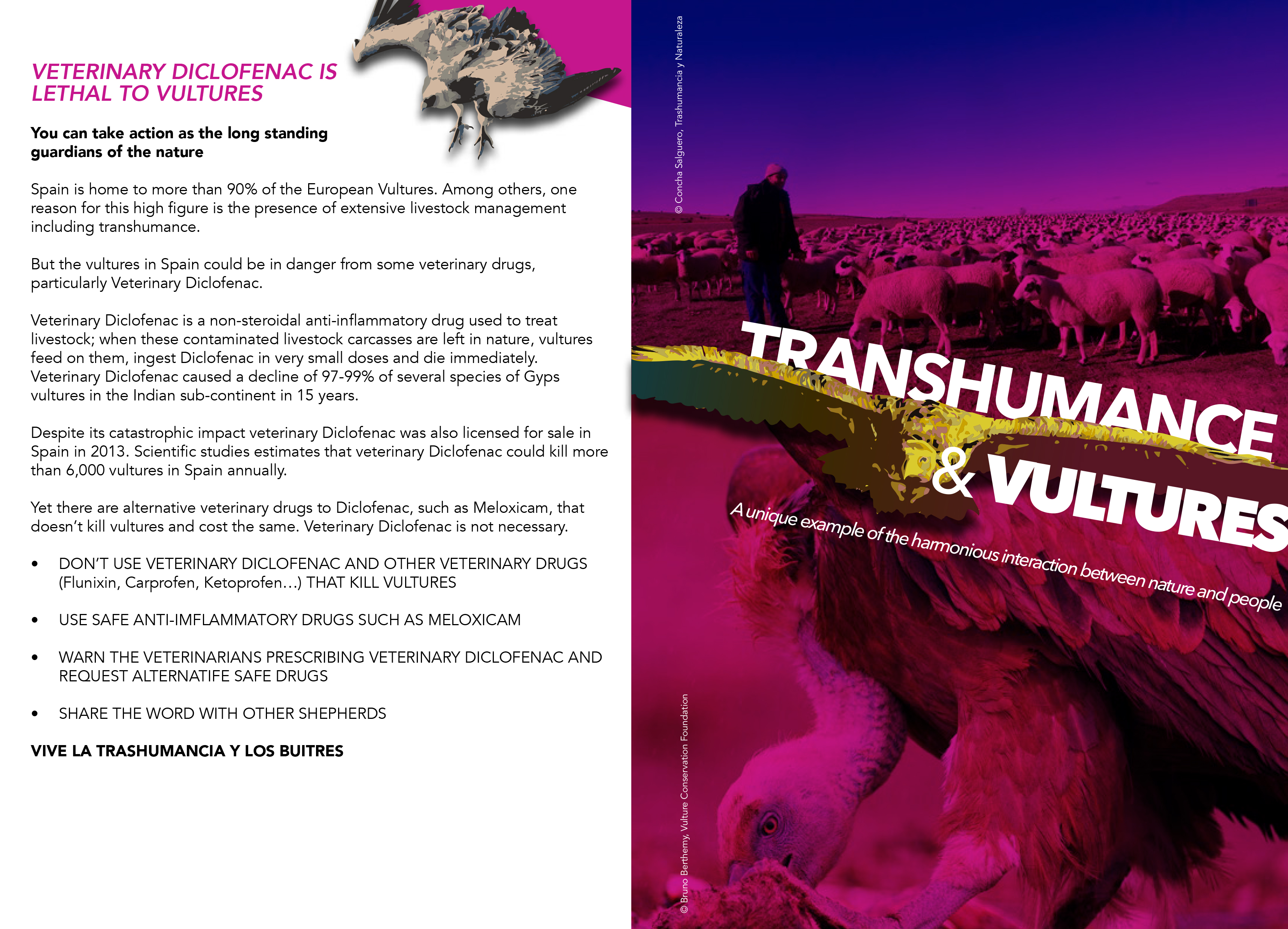
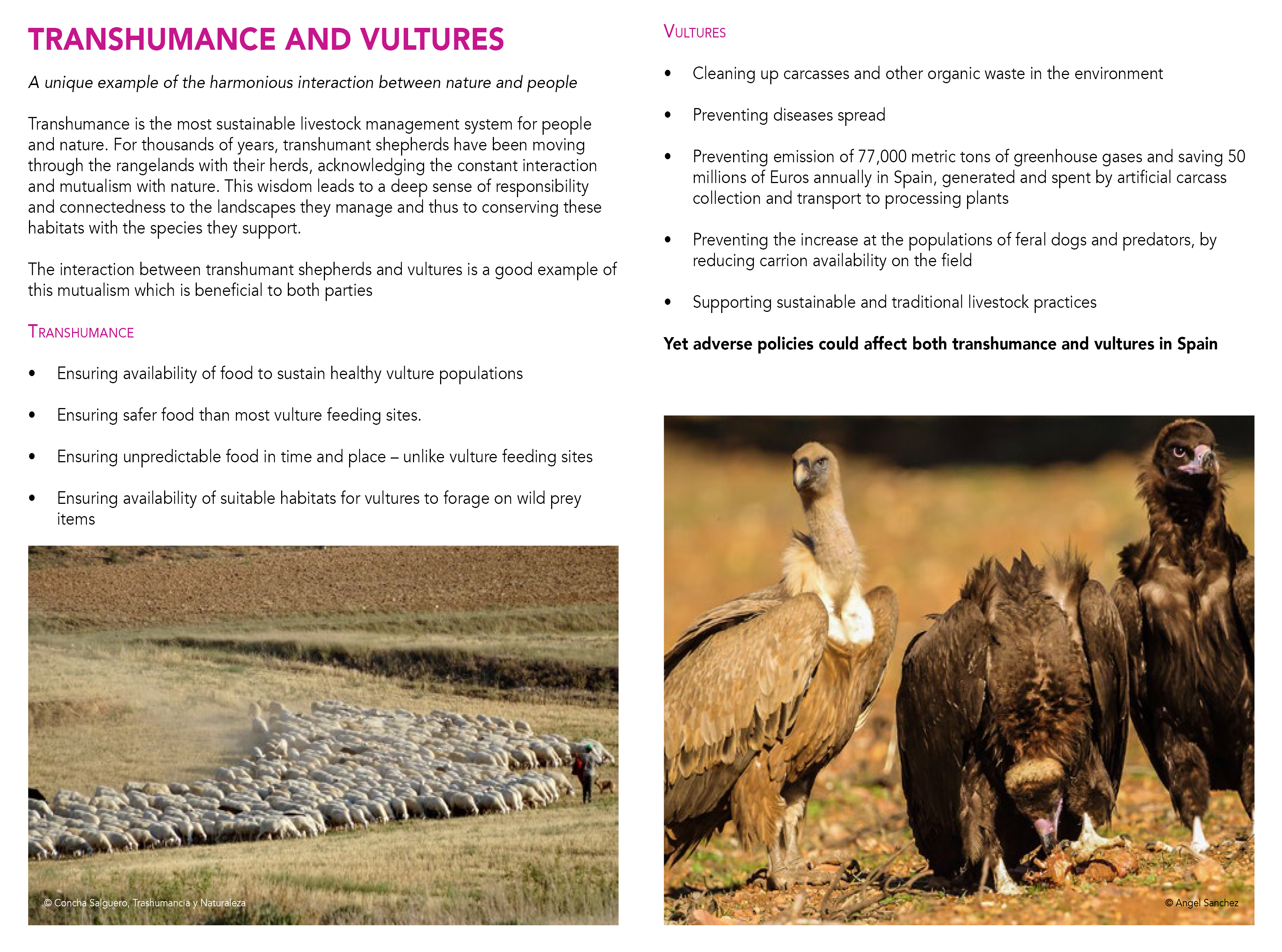
Veterinary Diclofenac is a non-steroid anti-inflammatory drug used to treat livestock. When vultures feed on the drugged livestock carcasses left in nature, they ingest Diclofenac in very small doses and die immediately. Veterinary Diclofenac has caused a decline of 97-99% of several species of Gyps vultures in the Indian sub-continent over the last 15 years. Despite it’s catastrophic impact veterinary Diclofenac was licensed for sale in Spain in 2013. Scientific studies estimates that veterinary Diclofenac kills more than 6,000 vultures in Spain annually.
To address the issue Yolda Initiative and Asociacion Trashumancia y Natureleza, in collaboration with the Vulture Conservation Foundation, ran a communications campaign which disseminated a leaflet on the issue and called for Spanish transhumant shepherds to take action as long-standing guardians of nature. Benefitting from events at which transhumant shepherds gather, such as the Livestock Fair in La Carolina, Jaen (one of the most of important gatherings in Spain), Yolda Initiative and Asociacion Trashumancia y Naturaleza collaborated with the Municipality of La Carolina and through their presentations demonstrated how nature conservationists and mobile pastoralists can initiate a dialogue towards collaboration for the sake of conserving both the practice and the environment.
Read our stories from partners and practitioners.
Read our stories from partners and practitioners.
Migration is a School for Mobile Pastoralist Children (Day 8)
The spring migration taking place between April & June, and the fall migration taking place between September & October, coincides with school calendar and mobile pastoralists find themselves forced to leave their children with settled relatives or in dormitories....
Mobile Pastoralism has Direct Benefits for Water Cycle Regulation (Day 7)
One of the most interesting features of migration routes is the fountains - cisterns that were built by mobile pastoralists over thousands of years for both themselves and their livestock to access water. Today the majority of the fountains, cisterns with no...
Mobile Pastoralism Protects the Soil (Day 6)
Day 6 sees the herd and pastoralists cover 47km as they climb up to an altitude of 1227 meters. The seasonal mobility of animals means they leave the pastures just in time to allow vegetation to recover. Livestock grazing is an effective tool for soil stability,...
Mobile Pastoralism has an Indespendible Role against Wildfires (Day 5)
On the fourth day of the migration the herd moved 24km along corridors that were created by the movement of their ancestors through forests for thousands of years. Today the Bacak family of Sarıkeçili nomadic pastoralists decide not to move in order to rest their...
Mobile Pastoralism and Nature (Day 4)
Mobile pastoralism has persisted over the centuries thanks to its harmonious existence with nature. Relying on a constant interaction and interdependency with the nature has led practitioners to cultivate a rich body of traditional ecological knowledge, which in turn...
Mobile Pastoralism is the most Efficient Livestock Farming System (Day 3)
3 days into the migration and the herd has moved 22km - from and altitude of 230 meters to one of 790 meters. As they climb, both the herd's and the Bacak family's moods improve. Mobile pastoralism is the most efficient and sustainable livestock farming system in...
Mobile Pastoralism and Natural Cultural Heritage (Day 2)
On the second day of the spring migration the Sarıkeçili nomadic pastoralists are moving up towards the Taurus Mountains. In Turkey, mobile pastoralism is a major traditional practice which has shaped the country’s outstanding landscapes where three of the world’s...
On the Move with Sarıkeçili Nomads – Day 1
Yolda Initiative is on the move for the Spring Migration. Follow them during this long spring to see how mobile pastoralists in Turkey live in harmony with nature by migrating between summering and wintering sites according to seasonal availability - as they have been...

